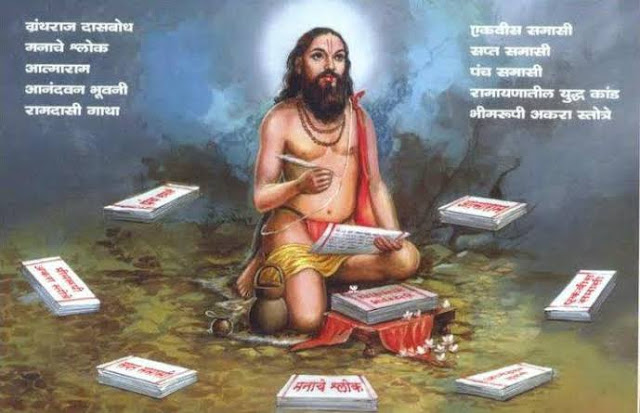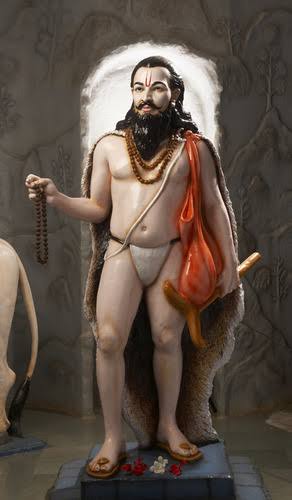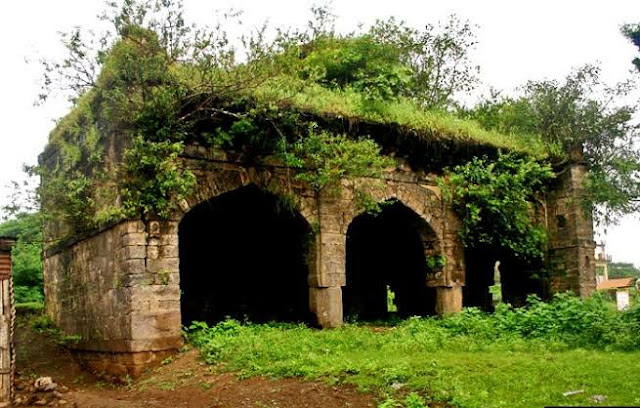All Rounder Personality of Samartha Ramdas Swami
All Rounder Personality of Samartha Ramdas Swami
Samarth Ramdas Swami: A Yogi, Mystic and Spiritual Leader
Samartha Ramdas Swami was a ripe Adwaitin, ideologue of Adi Shankaracharya. He had mastered Bhakti, Karma and Jnan Yoga completely during his 12 year Tapasya on the banks of Nandini Godavari river at Taakali. He completed Purashcharanas of Gayatri Mantra and Ram Naam during the same time He was initiated by Bhagwan Sri Rama himself and his spiritual journey was guided by Bhagwan Hanuman. He instilled a daily practice of 1200 surya namaskaras in his Sampraday. He had mastery over Ashta Maha and Ashta Laghu Siddhis. Daily walk of 40-50kms, running, climbing mountains with case was a children's play for him. Hence he was called as "Marudamshaja", ansh of Maruti.
Samarth Ramdas Swami: A Visionary Organizer
Samartha Ramdas Swami established 1100 mutts all to Thanjavur in South and Dwarka in West to Jagannath Puri in East. In 12 years of his Bhaarat Bhraman, Swamiji established a firm network of these Centres, not only for promoting spirituality, but also for gathering information about societal conditions, politics of the region and spreading areness about the same within common folk. His Shishyas were instrumental in supporting Shivaji Maharaj's cause of Hindavi Swarajya by supplying him intelligence and minute political conditions of the region... Samartha had made disciples even those who were working under Adilshahi, Qutbshahi and Mughalshahi. This network was of great help for Shivaji Maharaj when he was enroute to Maharashtra after escaping from Agra.
Samarth Ramdas Swami: A ripe politician
We hardly find a Spiritual Guru engaging in Politics After Swami Vudyaranya of Sringeri, Samartha Ramdas was one such rare person. Although he used to stay underground mostly, Swamiji had depth knowledge of Rajneeti. His treatises on Raj Dharma and Kshaatra Dharma, which were basically letters written to Shivaji Maharaj are classic examples of this fact. His empirical treatise, Dasbodh , has various Samaas like Rajkaran Nirupan, Chaturya Nirupan, Uttam Purusha Lakshan Nirupan.. to name a few, in which we get a glimpse of his understanding of Raj Neeti. One another testimonial to this fact is his letter to Chhatrapati Shambhaji Maharaj.
Samartha Ramdas used Hari Nam Sankeertana as his mode of public awareness. For that the keertankaar should engage people using music and different instruments. Samartha had written extensively about the qualities of Keertankaar, the music instruments to be used, the swara, taal, laya etc to be used , when and how to use them. In addition, Swamiji was a regular player of Tambora, Chipli, Taal, Dafli, Rudraveena, Brahmaveena and other instruments too.
Baag Prakaran, a treatise written by Swamiji has mention of approximately 278 vanaspatis like Kaatak, Babool, Nivdung, etc. He has given details about their qualities, usage and on which disease they are most effective.. A few incidents from his life like sending vibhuti and aushadhi teertha to Shivaji Maharaj which actually cured his illness and waking up a man from his funeral using proper techniques along with teertha and angara are sufficient to testify the abundant medical knowledge of Swamiji...
Another interesting but relatively unknown fact about Swamiji is that he had detailed knowledge of building and their construction. The Kaarkhana Prakaran, which he narrated while building a small factory at Sajjangad is a firm testament to this fact. The Kaarkhana Prakaran is divided into two parts, Veet Prakaran and Imarat Prakaran.Veet Prakaran deals with construction of a brick, materials to use, how to mix them, how much to heat them, shaping the mixture accordingly etc.. Imarat Prakaran deals with designs of outer walls, inner walls, their height, thickness, length and other purposes...
Samarth Ramdas Swami: A Prolific Writer
Swamiji had written Aarti of almost every God from Ganapati to Rama, Devi to Dattatreya, Karunashtake, Sawayi, Shadripunirupan, Khandoba etc.. Swamiji had also re written the Valmiki Ramayana in Sanskrit in his own style Dasbodh, Manache Shlok, Atmaram Junaat Purush, Chatwarman, Anandavan Bhuvani, Abhangas are some of his special creations. He had authored 11 stotras on Bhagwan Maruti, 24 on Bhagwan Rama, 32 on Devi Tuljabhavani. Miscellaneous stotras like mangalacharana, suryastuti etc are also authored by him.. Swamiji had written and propagated texts like Sundarkaand and Guru Geeta in Marathi.
Samarth Ramdas Swami: A Keen Observer
Samartha travelled extensively in his lifespan. He kept on observing and recording the socio political scenarios of that time. The rapid changes in political dynamics of the North, tyranny of Islamic Sultanates on Hindus, the punctured mindset of the locals, lack of retaliatory spirit... The works of Swamiji like Parachakra Nirupan and Asmani Sultani have graphic description of rapes, molestation and selling of kuleen and other hindu women, the pitiable conditions of farmers and other common men, the Brahmanas and Kshatriyas accepting service of the tyrants, the religious conversions, lack of faith in Swa Dharma etc.. Conversely, Swamiji's work "Anandvanabhuvanam" when Shivaji Maharaj created his independent Hindu Kingdom describes the ideals of Hindavi Swarajya to its precise core...
Miscellaneous Facts About Samarth Ramdas Swami:
- Jaat rebellion under leadership of Gokula Jaat was inspired by Samartha Ramdas Swami..
- Samartha Ramdas Swami himself was heavily inspired by Sikh Guru Hargobind Singh...
- Samartha Ramdas Swami is the reason that we in Maharashtra have one Maruti temple on border of every village.
- The Bhagwa Flag of Hindavi Swarajya, which today has become symbolic of Hinduism was actually gifted to Shivaji Maharaj by Swamiji Swamiji.
- Calculated speed of light in his Suryastuti. It came out to be 2.53 x 10^3 m/s in today's units.
- Swamiji was well versed in horse riding, wrestling , swordsmanship and using some Maratha Specific ammunitions like Dandpatta..
- He carried a hidden sword gifted by Shivaji Maharaj within his arm rest for protection..
Magh Vadya Navami marks the Samadhi Tithi of Swamiji. It's also called as Das Navami by Ramdasis. It's my humblest and honest try to throw some light on the multiple facets of the diamond personality of Swamiji that my limited capacity can fathom. Hope we all surrender to his feet and gain knowledge to improve our lives individually and nation collectively.
- Brahma Muhurta Time - Best Time to Wake Up in the Morning
- 12 Types of Legal Heir ( Children ) in Ancient India
- Chakravyuh | Padmavyuha The Biggest Secrets
- How to practice Dhyana by Ved, Science and Maths
- Significance of Feeding Crows
- 16 Adornments सोलह श्रृंगार (Solah Shringar)
- Significance of Choice of Morality - Part 1
- Significance of Choice of Morality - Part 2
- 10 Things Hindu Men Must Follow
- What Hindu Women Must Know
- Why do Hindus Wear Bindis and Tilaks on Their Forehead? Science and Significance behind Tilak and Bindi
- Who is a Hindu?
- Classification of Hindu Scriptures
- Dance in Hindu Civilization
- The Story of Adi Shankaracharya
- When A Devotee Offered Meat to Lord Shiva
- The Story of Gajendra Moksha Stotra
- Mysteries about Baba Amarnath Cave Temple
- Secrets of DEVI DURGA
- Draupadi
- Hanuman Janmotsav
- How 100 Kauravas Were Born
- Secrets Of SHRIMANT PESHWA BAJIRAO
- Philosophical and Spiritual Significance Of Ramayana
- DAY 1 of NAVARATRI 2021 :- Maa Shailaputri
- DAY 2 of NAVARATRI 2021 :- Brahmacharini Devi
- DAY 3 of NAVARATRI 2021:- Chandraghanta Devi
- DAY 4 of NAVARATRI :- Kushmanda Devi
- DAY 5 of NAVARATRI :- Skandamata Devi
- DAY 6 of NAVARATRI :- Katyayani Devi
- DAY 7 of NAVRATRI :- Kalaratri Devi
- DAY 8 of NAVRARATRI :- Mahagauri Devi
- DAY 9 of NAVARATRI :- Siddhidhatri Devi
- The Submerged City of DWARKA
- How to manifest anything you want









